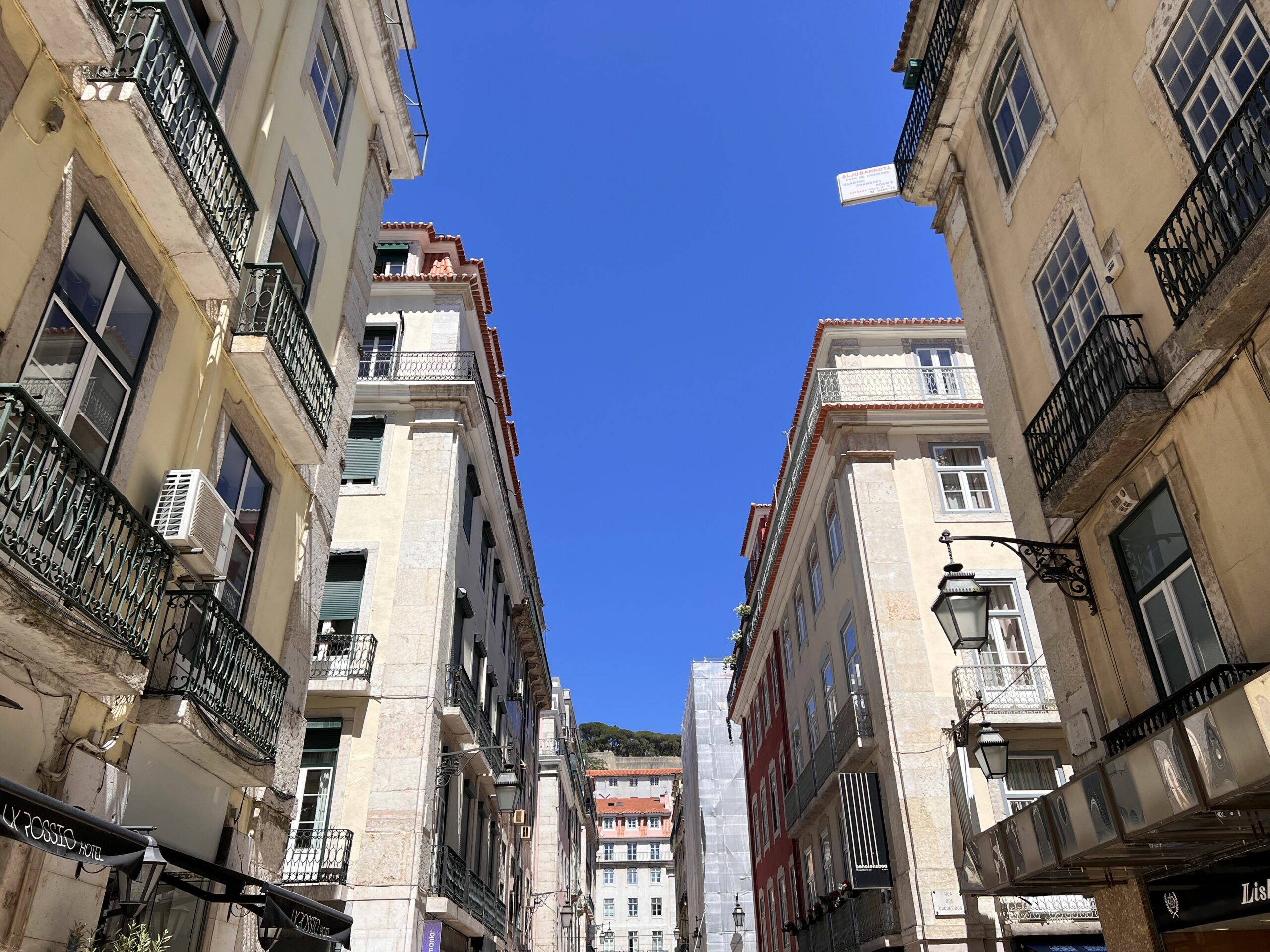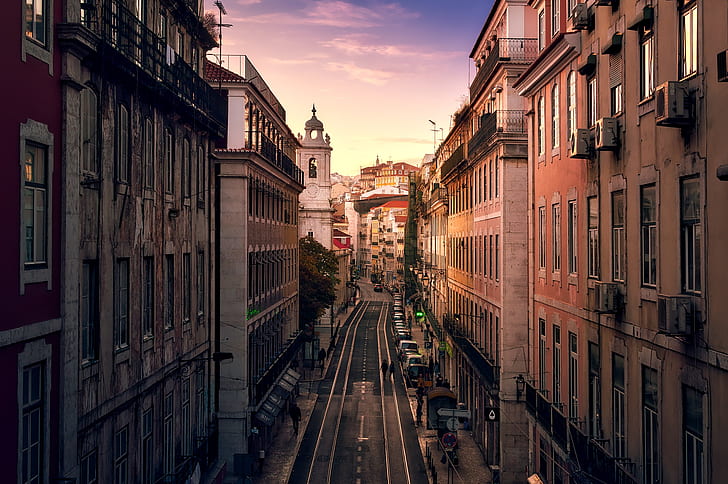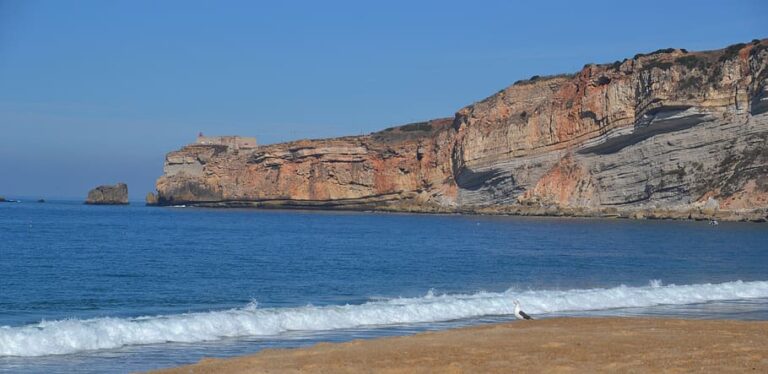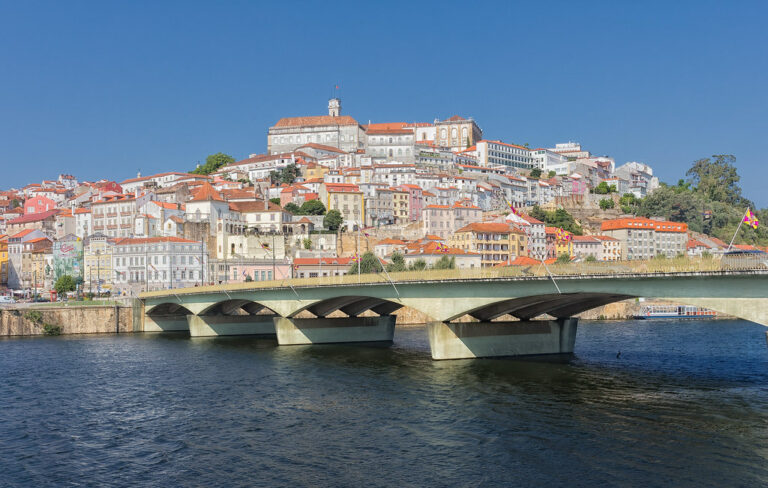Would you like to spend 4 days in Lisbon but are unsure how to plan your trip?
Then you are in for a treat with my 4-day Lisbon itinerary. Lisbon, the Portuguese capital, dazzles visitors with its hilltop views, tasty cuisine, fascinating history, and lively culture.
This Mediterranean capital offers the perfect blend of tradition and modern vibes.
I also have a 5-day Itinerary available if you have more time to spend than four days in this charming place. Or spend even six if you can.
4 Days in Lisbon: Full Itinerary
With only four days in Lisbon, you must carefully plan your time to see the top attractions. I’ve assembled an itinerary that lets you experience Lisbon’s magical charm in only four days.
You’ll start at the city center and journey through charming neighborhoods, view iconic landmarks, sample tasty pastries, and more.
Day 1: Start at Chiado and End at Barrio Alto
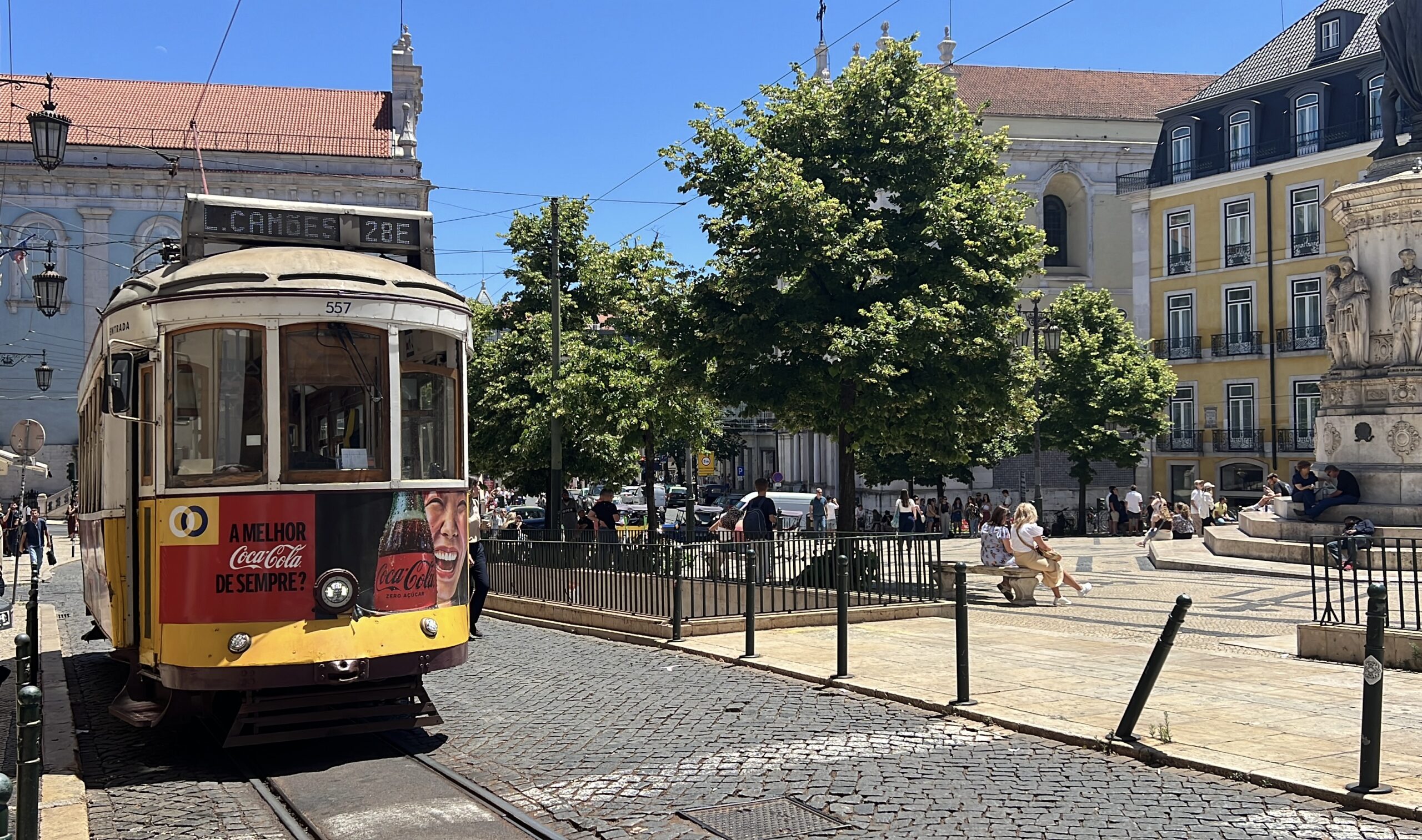
I recommend you start your Lisbon adventures in Chiado at the city center.
The historic center with a shopping district within the elegant Baixa neighborhood features bookstores, boutique shops, and cafés.
Stroll through Carmo Square and the iconic Santa Justa Lift. Then, ride Tram 28 past historic sites as it winds down to Alfama.
This charming hilly neighborhood, the oldest part of Lisbon, feels like stepping back in time with its winding cobblestone streets.
Continue down to the River Tagus to visit Praça do Comércio. Then, cross the river to explore Barrio Alto’s buzzing nightlife venues before some traditional Fado music.
Explore Praça Luis de Camōes
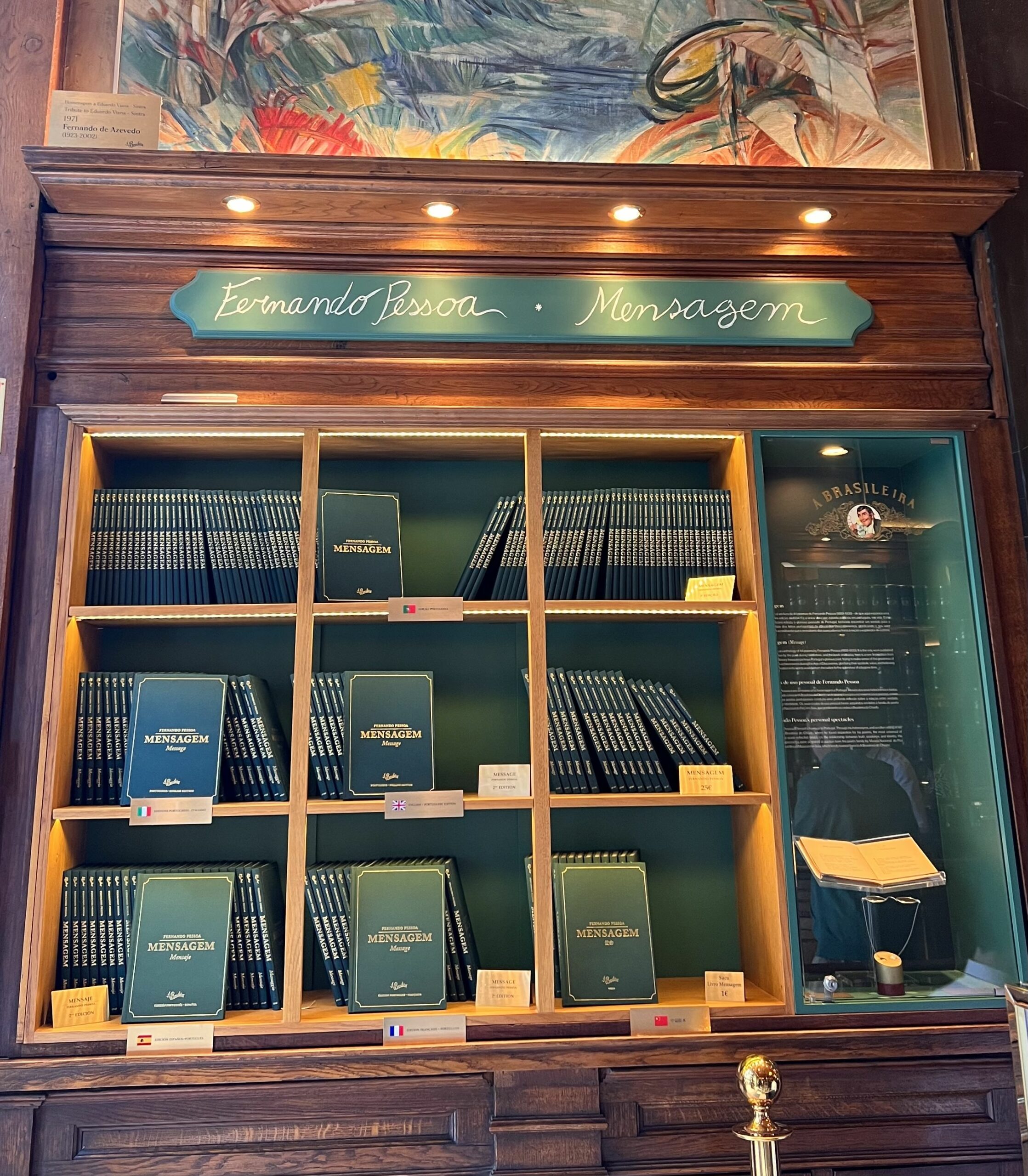
This lively square features pavement cafés, making it a perfect spot to watch the world pass by or admire local architecture in the city center. It is also an ideal spot to start your first day in Lisbon.
While here, check out a treasure trove called Livraria Sá da Costa with vintage photos, old tiles, and 2nd-hand books. It is a true adventure. Browse through it, and you can find many hidden gems here.
Then head to A Brasileira, a lovely cafe with outdoor seating and a stunning deco interior. Enjoy a break and do people-watching at a coffee shop. Or if you feel peckish, you can visit O Trevo for a pork sandwich (bifana).
Take a Ride on Tram 28
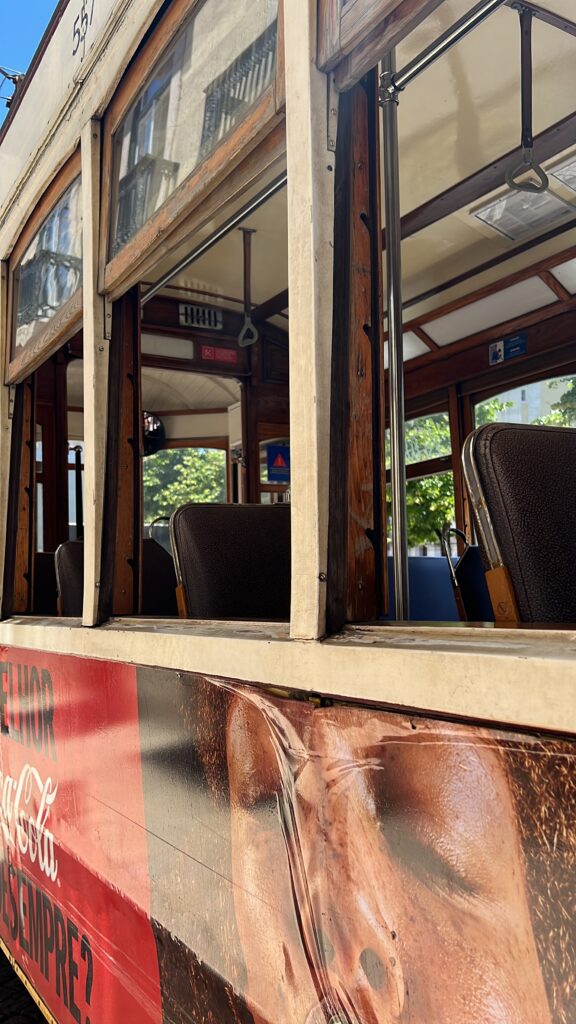
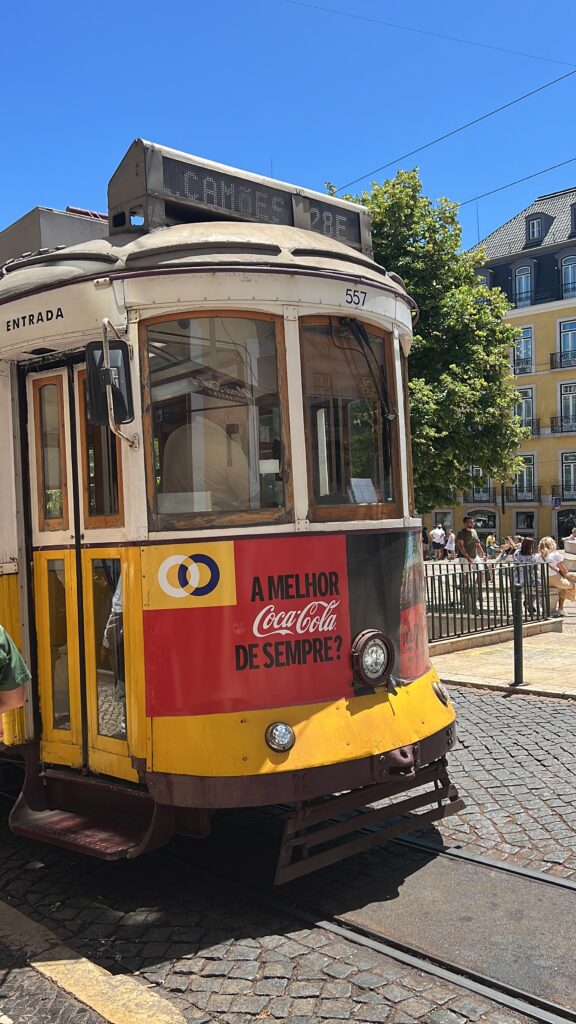
Board this classic yellow trolley, Tram 28, as it rattles past the beautiful Igreja de São Roque church and scenic Lisbon neighborhoods. So, you will see some tremendous historic landmarks along the way.
Still, it can get crowded inside, and riding only in the morning is best. If you plan to use transport throughout your trip, get the Navegante card at a nearby metro station. You can top it up with funds during your stay in Lisbon.
With the card, you can travel on buses, ferries, trams, and subways. If you do not want to wait for the tram, you can walk or hop onto the metro to reach your next destination.
Visit Sé de Lisboa (Lisbon Cathedral) Near Alfama
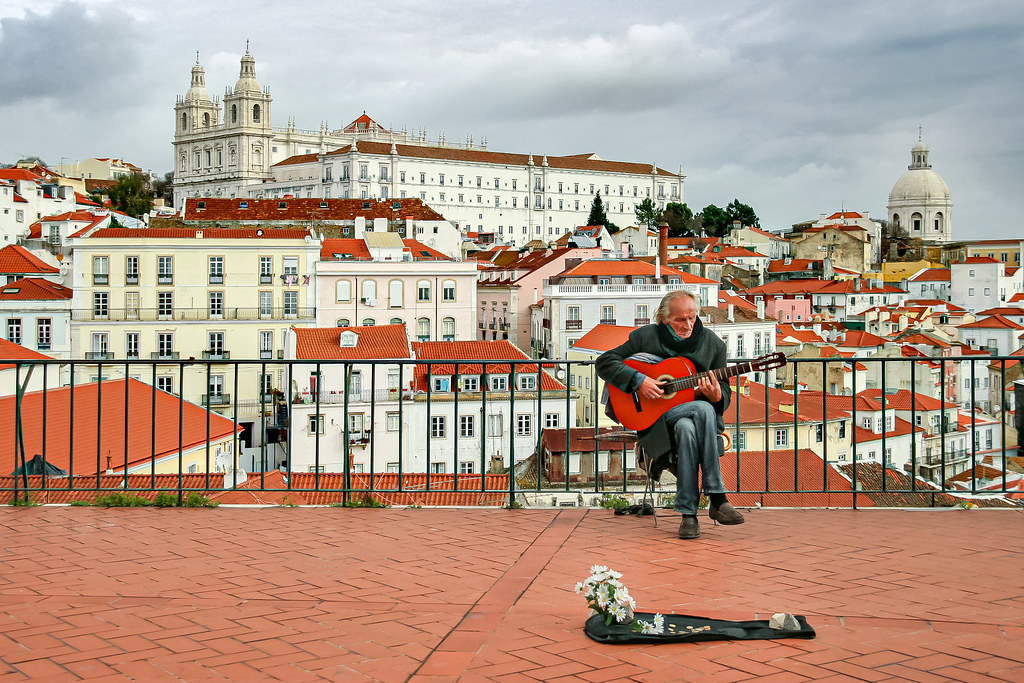
The Lisbon cathedral dates back to the 12th century; this imposing limestone cathedral stands above this historic neighborhood. You will find the Lisbon cathedral near the Alfama district, where you will head next.
It has a long history; you can get off the tram before the church to explore inside. But if you do not want to explore, remain on the tram to reach Graça. Here you will also find some beautiful views and the famous castle.
But returning to the cathedral, it suffered massive destruction in the 1755 earthquake and has been under construction, so if you have the time, explore this marvel from the inside with its gothic architecture and stained glass.
Walk the Streets of Alfama

Once you reach Miradouro da Graça, mosey down the winding stone streets and alleys lined with colorful houses and festive drying laundry.
You will reach Miradouro das Portas do Sol and Miradouro de Santa Luzia, Lisbon’s two most famous viewpoints. Enjoy the incredible views over the district and Tagus River.
By this time, you will be thirsty, so enjoy a bite to eat and a drink when exploring some of the best Alfama cafes and restaurants. To reach the district, look for a staircase going downhill between the two viewpoints.
You will now be in the oldest neighborhood of Lisbon.
Admire The Triumphal Arch and Lively Square Close to The Waterfront
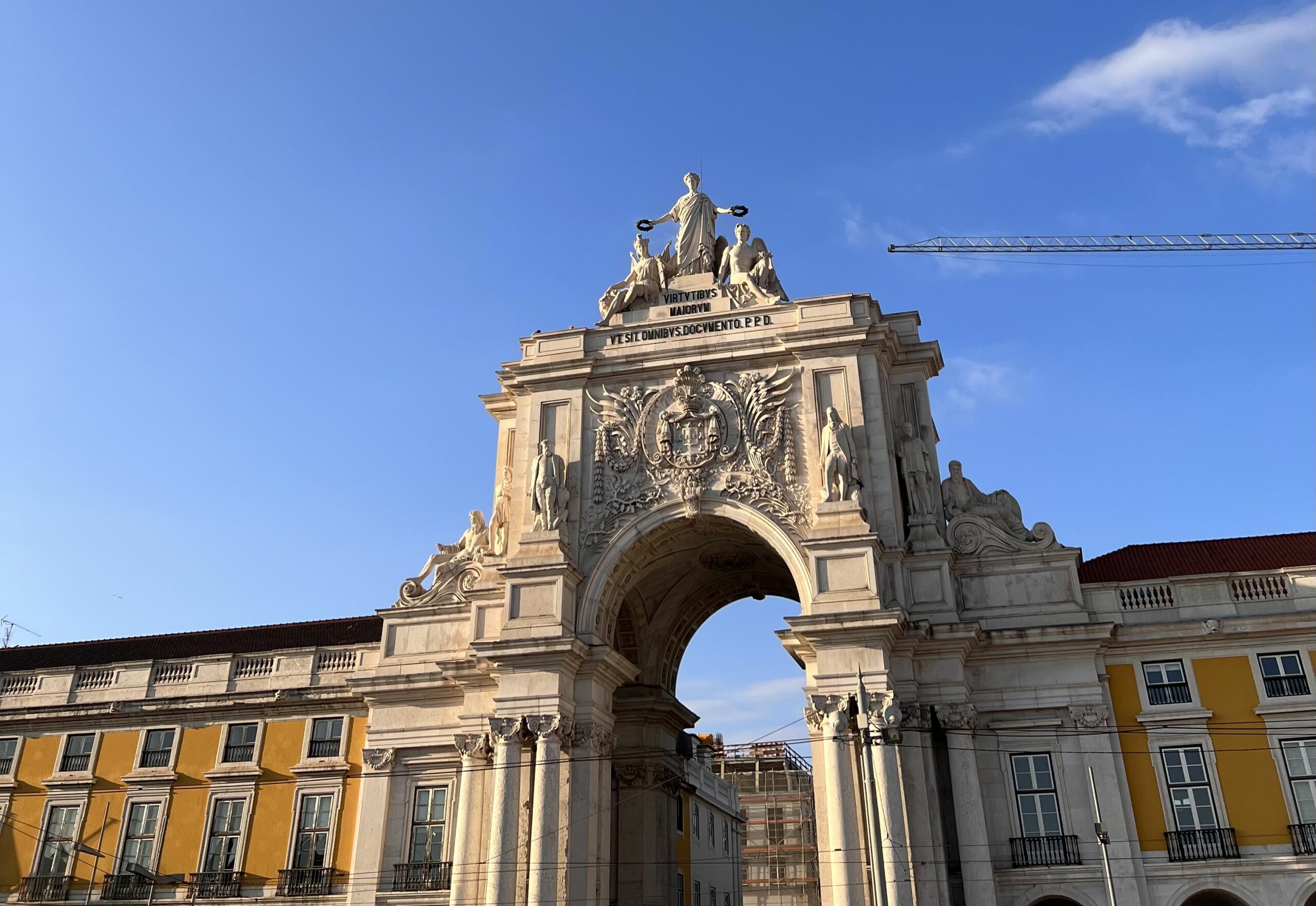
Once enjoying something to eat and drink, make your way down, heading towards Commerce Square ( Praça do Comércio.)
In front of you stands this grand plaza, part of the royal palace destroyed in the 1755 Lisbon earthquake. Explore the center of this magical square to find the King José statue looking towards the Tagus River. Just below it is Marquis do Pombal.
Marquis was credited for rebuilding after the natural disaster struck Lisbon. Then, head towards the triumphal arch celebrating Lisbon’s victory over the natural disaster, Arco da Rua Augusta.
You can climb this arch for spectacular city panoramic views over the Tagus River or pass it by heading underneath the arch and straight up the road.
Ascend The Iconic Santa Justa Lift
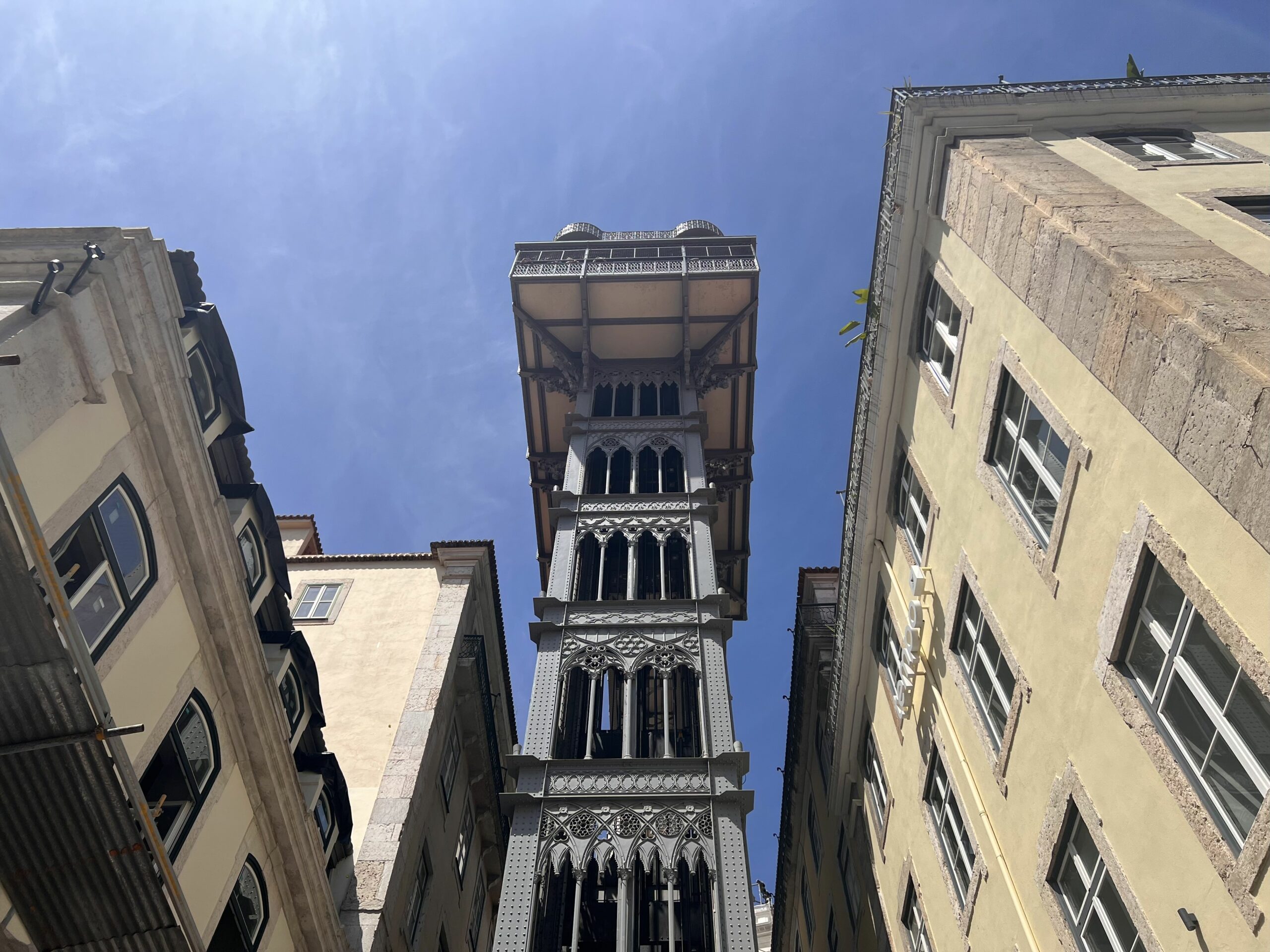
Once you reach Rua de Santra Justa, you will be amazed at the iconic Santa Justa Elevator to the left of you.
The lift is a star attraction on your trip, and there can be long queues to ride the elevator, so be warned. Still, you can skip the long line and walk towards Largo di Carmo instead.
Look for the narrow streets that go uphill on the right along the church. Then, walk on this path to discover another hidden Lisbon viewpoint with stunning views. The best part is that the vistas are incredible, and you need not wait in a long line.
Also, explore the Carmo Convent ruins here and continue your journey down the hill to Barrio Alto. While it looks quiet during the day, you should reach it closer to sunset, and it becomes alive.
Planning On Going To Lisbon?
I’ve created a trip planner where you enter the number of days you’re going and what activities you want to do.
Based on your input, you then get an entire vacation planned with ideas.

End The Day With Food and Fado Music
Now you can enjoy traditional fado music to immerse yourself in the Portuguese culture. A great way to enjoy it is with a food & fado tour. With the outing, you will visit some of the best fado houses to enjoy food and music with the locals.
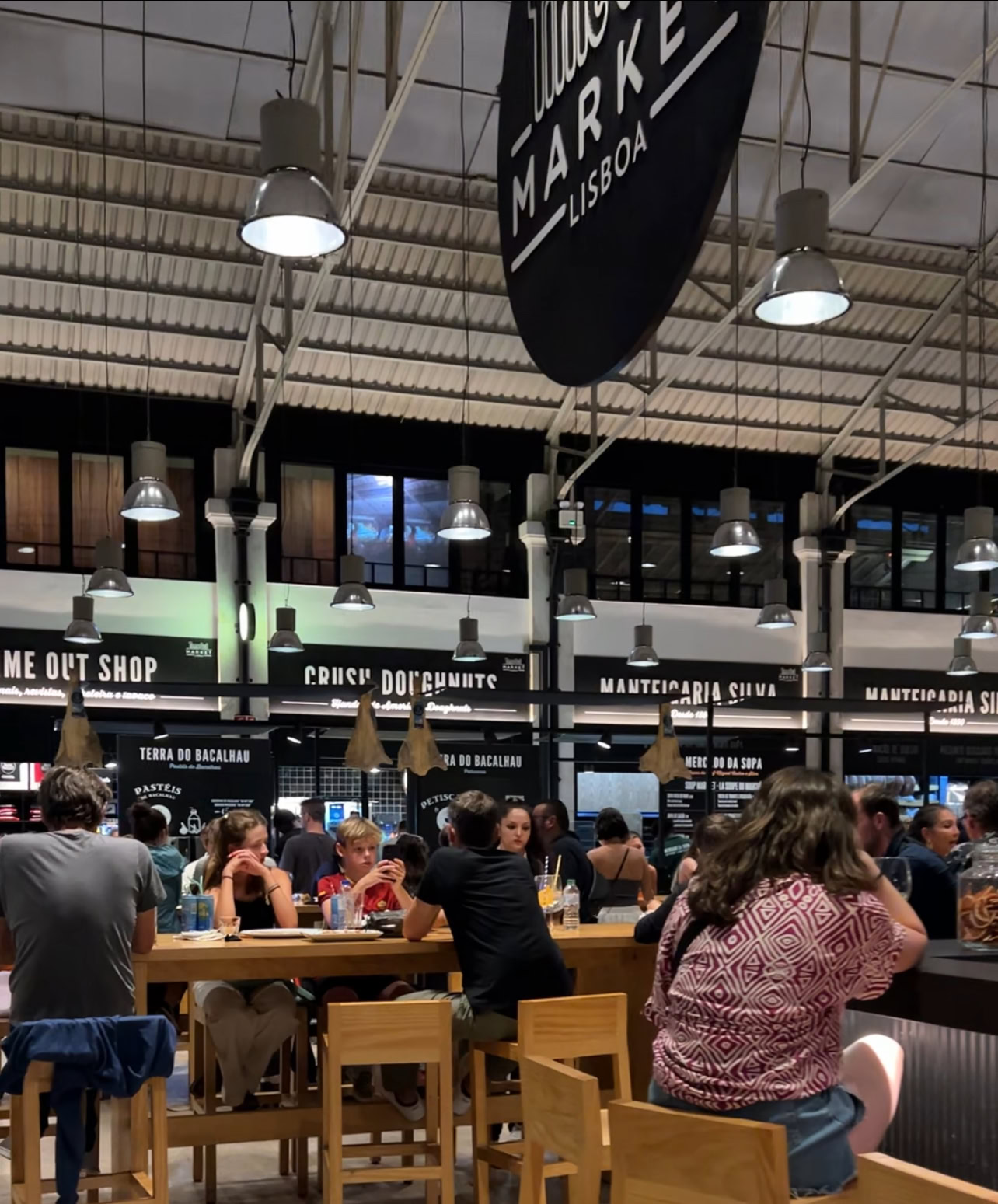
On the other hand, if you want to avoid going on the tour, enjoy dinner at the Time Out Market. Here, you can enjoy Portuguese dishes in one place. You will find it across the train station Cais do Sodre.
It is in a historic market called Mercado da Ribeira. Here, you can explore some of the Portuguese food, and it is affordable. Finish your day with a long walk at Pink Street, a lively hub to enjoy some drinks.
Hot Tip🔥: Add these things to do to your Lisbon bucket list.
Day 2: Belem Tower to Pasteis de Belem

On your second day, hop on tram #15 to Belem to see incredible history and sample a famous pastry.
Visit the 16th-century medieval Belem Tower, the Discoveries Monument honoring Portugal’s explorer royalty, and Jerónimos Monastery with Vasco da Gama’s tomb.
Fuel up for the day at Pasteis de Belem bakery, home of the original pastel de nata custard tarts.
Then, visit an intriguing Lisbon museum or take an afternoon sailing tour on the Tagus River before seafood dining at LX Factory.
Explore Belem Tower
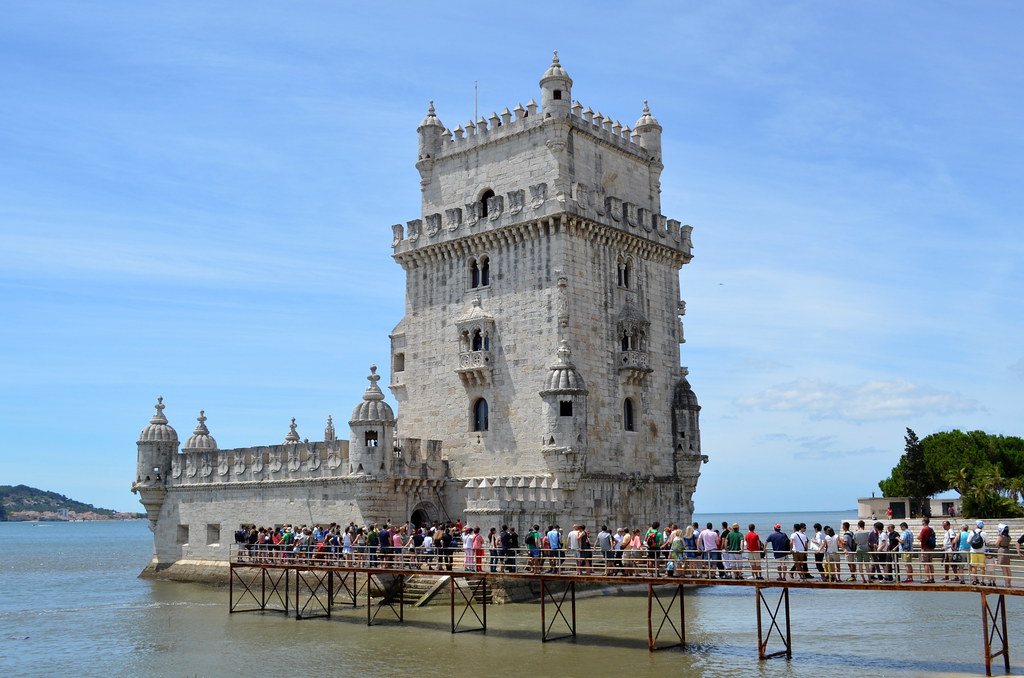
Visit the UNESCO World Heritage Site, a famous landmark with incredible architecture. It is strategically placed and offers a captivating experience, as it has a rich history and stunning architecture.
The tower, also known as the Tower of St. Vincent, was built in the early 16th century as part of a defensive system to protect the entrance to Lisbon’s harbor.
The tower showcases a unique blend of architectural styles, including Manueline, Gothic, and Moorish influences. The intricate details and ornate carvings on the façade are awe-inspiring.
The tower’s interior often hosts cultural exhibitions and displays related to Portugal’s maritime history. These exhibits provide you with additional insights into the country’s exploratory past.
You can purchase entry tickets to go inside, but you can also get stunning views from outside.
Visit Padrão dos Descobrimentos
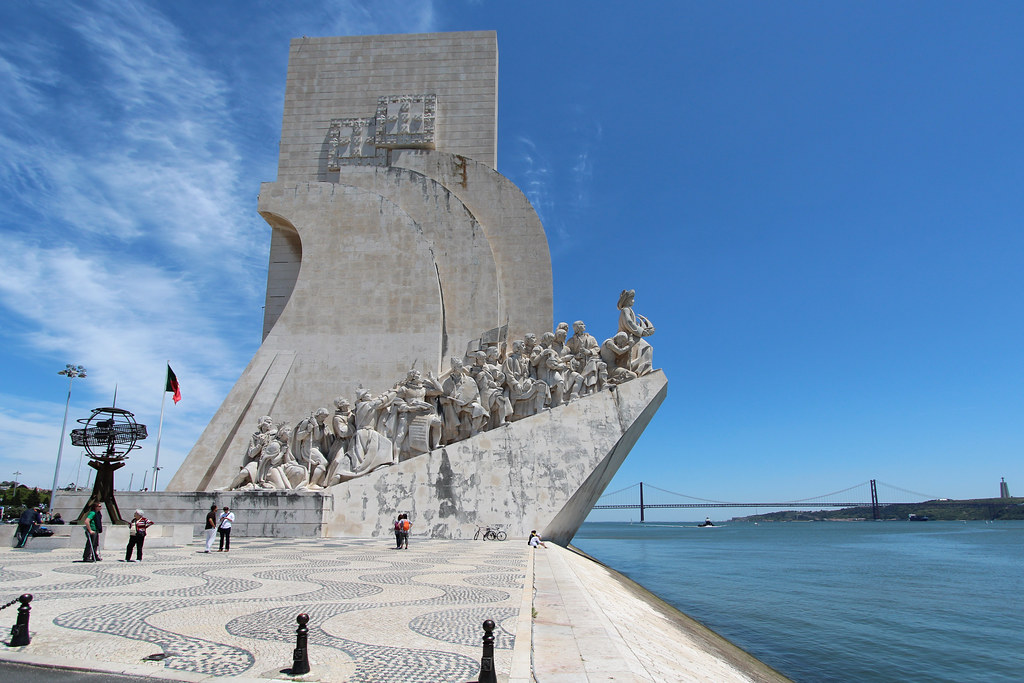
This striking 52-meter waterfront sculpture celebrates Portugal’s 15th-16th century Age of Discovery. The statue has 33 figures, with Henry the Navigator as the main attraction. With a ticket, you can ride to the top for stunning views.
The Padrão dos Descobrimentos, also known as the Monument to the Discoveries, was built in 1960 to commemorate the 500th anniversary of the death of Henry the Navigator, a key figure in the Age of Discoveries.
It symbolizes Portugal’s significant role during the Age of Discoveries, celebrating explorers, pioneers, and the spirit of adventure.
Explore Jerónimos Monastery
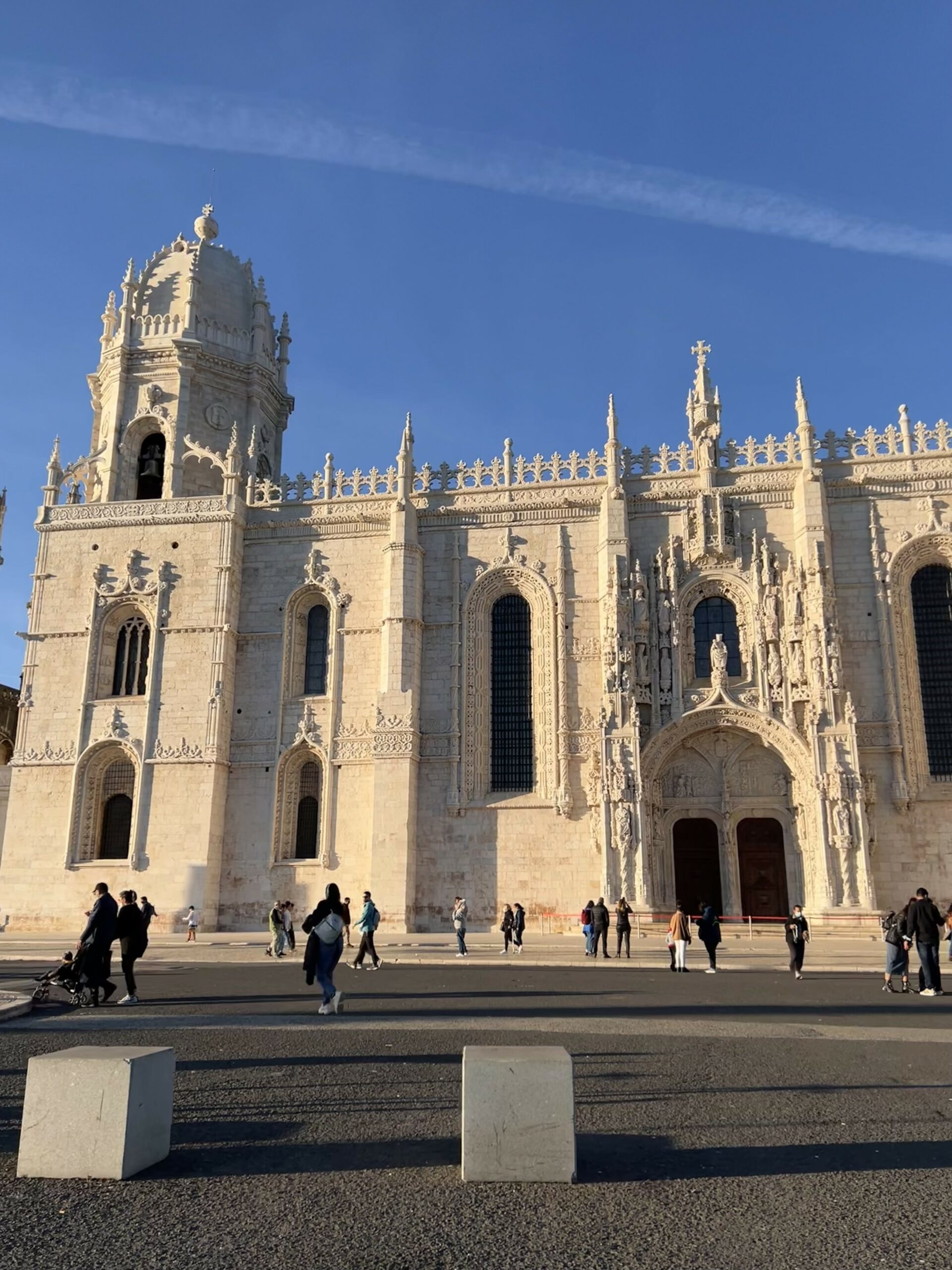
Once done with the sculpture, take the path across the road to reach the Praça do Império gardens.
Then, head to the Jerónimos Monastery, which has stunning architecture. It took people centuries to build Jerónimos Monastery and even survived the earthquake.
The Jerónimos Monastery is a prime example of Manueline architecture, a Portuguese style that flourished during the late 15th and early 16th centuries. The intricate details and ornate carvings on the monastery’s façade are awe-inspiring.
The Jeronimos Monastery includes the Church of Santa Maria, a grand church with a spacious interior. The church is the final resting place of some significant historical figures, including Vasco da Gama, the renowned Portuguese explorer.
The church houses the tomb of Vasco da Gama, the celebrated explorer who played a crucial role in establishing maritime routes to India. The tomb is an impressive piece of Renaissance art, depicting Vasco da Gama in a regal pose.
The monastery is surrounded by well-maintained gardens, providing a peaceful and scenic setting. You can take a stroll in the gardens and enjoy the serene atmosphere. You can book some tickets in advance to skip the lines.
Eat Egg Custard Tarts (Pastel de Nata)

After your explorations, head into town, where you will find different restaurants to enjoy a meal.
Still, after your lunch, enjoy some dessert to indulge yourself in pastel de natas at the famous Pasteis de Belem.
These tarts are irresistible, and you get enough icing sugar to cinnamon over them.
Take Time to Explore a Museum
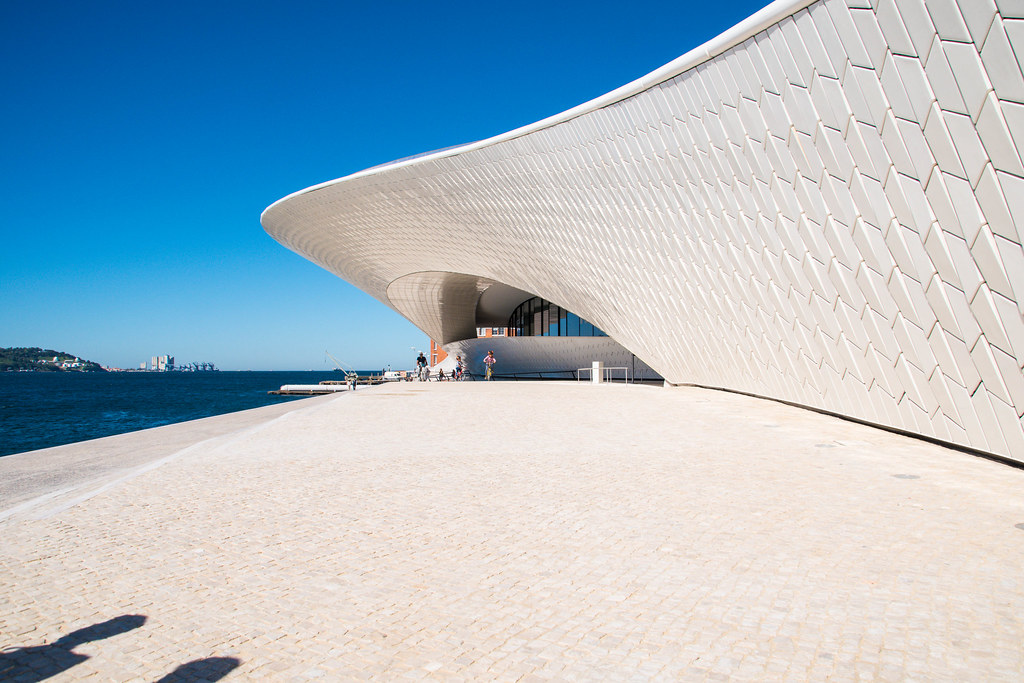
After lunch, you can visit several museums and art galleries in Belem. My recommendations include a modern art gallery, MAAT, or the Museu dos Coches museum with old trams. You can also head to the Museu Coleção Berardo, a rooftop cafe.
Tagus River Sailing Tour
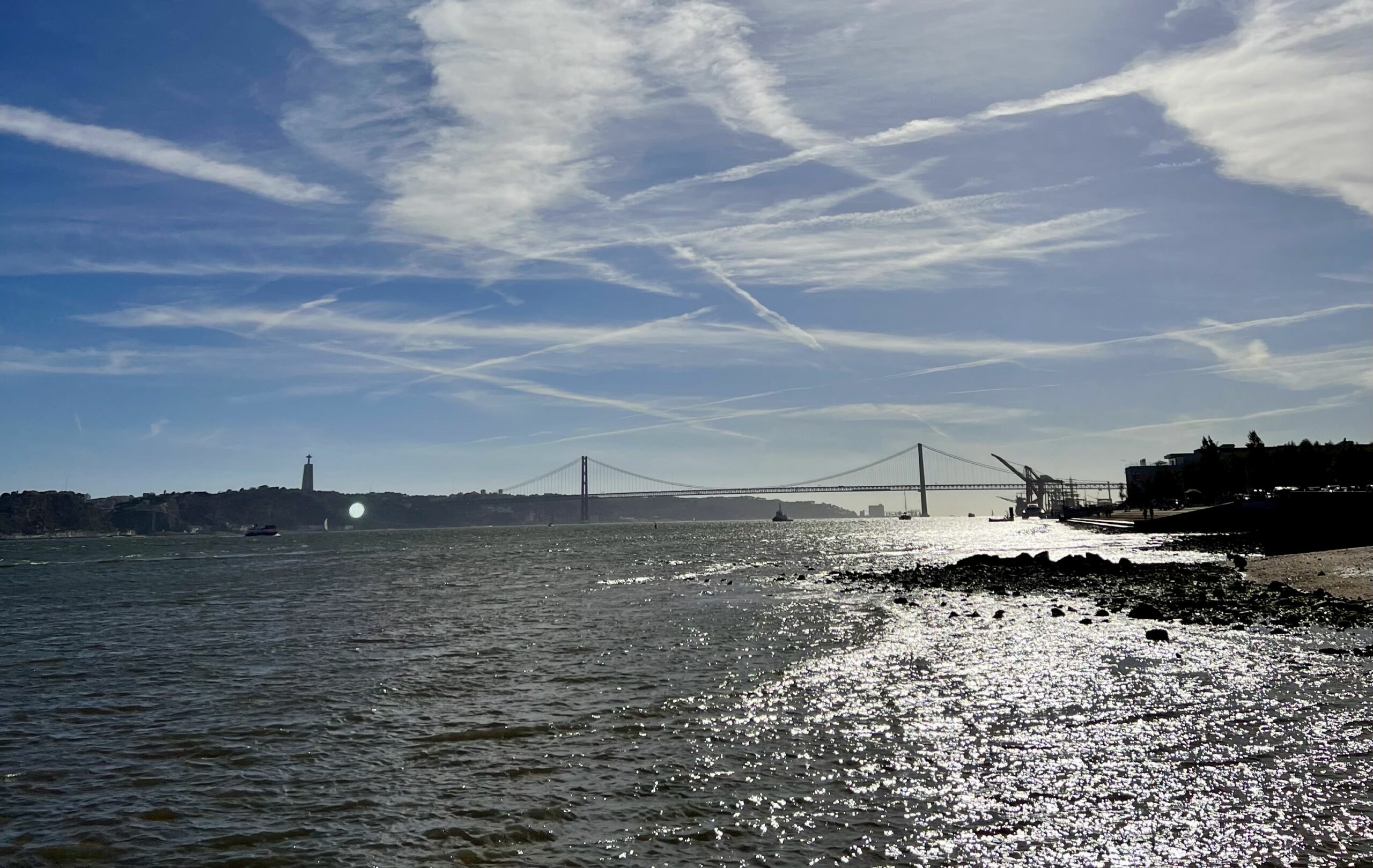
Another highlight is sailing the river, which takes around two hours. Many of these tours provide you with drinks and snacks. While sailing, a guide will give you all the information on the top attractions in Belem.
End Your Day at the LX Factory

Enjoy dining at the LX Factory in the Alcântara neighborhood. This vibrant neighborhood has restaurants, shops, bookstores, bars, art, and more. There is also a rooftop bar with a fantastic view of the LX Factory.
LX Factory has numerous art studios, galleries, and cultural spaces. It has become a haven for artists, designers, and creative entrepreneurs, creating a dynamic and inspiring environment.
The industrial architecture of LX Factory adds a distinctive character to the area. The repurposed warehouses and factories now house a variety of businesses, including shops, restaurants, and offices, creating an eclectic and innovative atmosphere.
As evening falls, LX Factory comes alive with a vibrant nightlife. The bars and entertainment venues offer a mix of live music, DJ sets, and cultural events, making it an exciting destination for those seeking a lively atmosphere.
The walls of LX Factory are adorned with colorful street art and murals, contributing to the area’s bohemian and creative vibe. Exploring the streets at the LX Factory is like wandering through an open-air art gallery.
Here are the best things to do in Lisbon In July 2024
I’ll send you a list of the best things to do in July and every month moving forward from today.
It’ll be based on my personal experience of living and traveling around Lisbon. A lot of hidden gems.
Day 3: Sintra to The Moorish Castle Lisbon Itinerary
Escape the city to the picturesque town of Sintra, nestled in the pine-covered hills of the Serra de Sintra. It makes for a perfect day trip. Enjoy a day of sightseeing in the fairytale village.
Marvel at the dazzling Romanticist architecture of 19th-century Pena Palace, then wander the mystical Quinta da Regaleira estate and the ruins of Moorish Castle, which offer stunning views over Sintra.
I recommend investing in the Viva Viagem card for this day trip. You will travel with the Sintra train, which can take up to an hour.
Explore Pena Palace
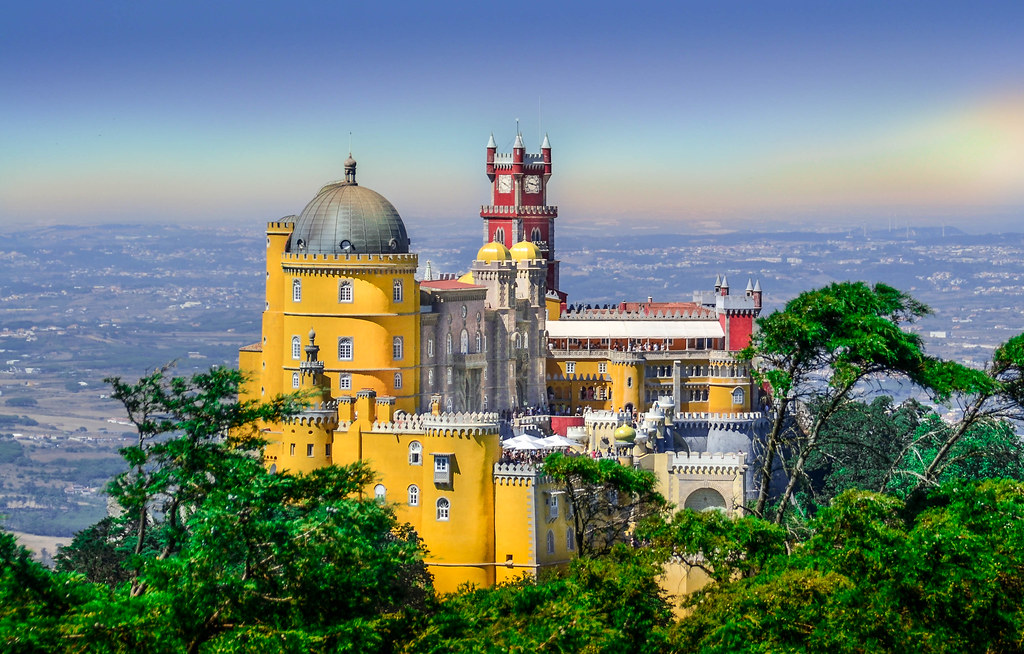
The exotic Pena sits high on a hill, its vibrant colors, towers, and domes unlike any other European palace. It is a 19th-century palace located in Sintra, Portugal.
You can tour the palace’s interior, which is colorful and ornate. The staterooms, royal bedrooms, and Arab Room are especially impressive.
Check out the palace’s unique architecture, which mixes German Neuschwanstein castle, Portuguese Manueline styles, and Moorish and Renaissance influences.
Its twin chimneys and statues atop the structure are striking. Visitors can wander through the palace gardens and view the Sintra Mountains and forests.
The gardens contain exotic plants, fountains, grottoes, and a large lawn. There is also an old kitchen with massive chimneys, charcoal stoves, and copper pots and pans.
Even the palace’s woodwork and tile (azulejo) work is impressive. Then, visit the chapel with colorful stained glass windows and carved wooden stalls. Check out the expansive, stunning views over the countryside from various palace vantage points.
On clear days, you can even spot the Atlantic Ocean. Still, you must buy two separate entrance tickets for the palace and garden.
Vist Quinta da Regaleira
The intriguing estate features luxuriant gardens, Gothic towers, mysterious underground tunnels, enchanting palaces, and fountains.
Originally built between 1904 and 1910 for a Portuguese merchant named Carvalho Monteiro, the entire estate is now a UNESCO World Heritage Site.
The main palace is known as The Palace of Monteiro the Millionaire. This imposing mansion has distinct Manueline architectural influences, featuring Gothic spires and intricate carvings.
The interior contains an elegant wood-paneled dining room and a living room with a fireplace carved from a single stone. Look up above the fireplace to see the carved oak face known locally as
The initiation wells are perhaps the most fascinating feature on the grounds. These deep, narrow wells with underground tunnels leading to other points on the estate were supposedly used for secretive initiation rites.
Walk down the long spiral staircase to view the impressive masonry work and get a sense of mystery. The vaulted limestone and water-filled tunnels are always 55-65 degrees Fahrenheit.
The estate gardens are shaped into ascending terraces, with towers strategically placed to give the best views over Sintra. The grounds contain ponds, caves, fountains covered in moss and lichens, mystical caverns, and 500-year-old camellia trees.
Walk over an elegant two-story chapel bridge to access the woodlands on the hill behind the palace. Look for hidden Bálsamo lions among the shrubs.
Explore the Moorish Castle
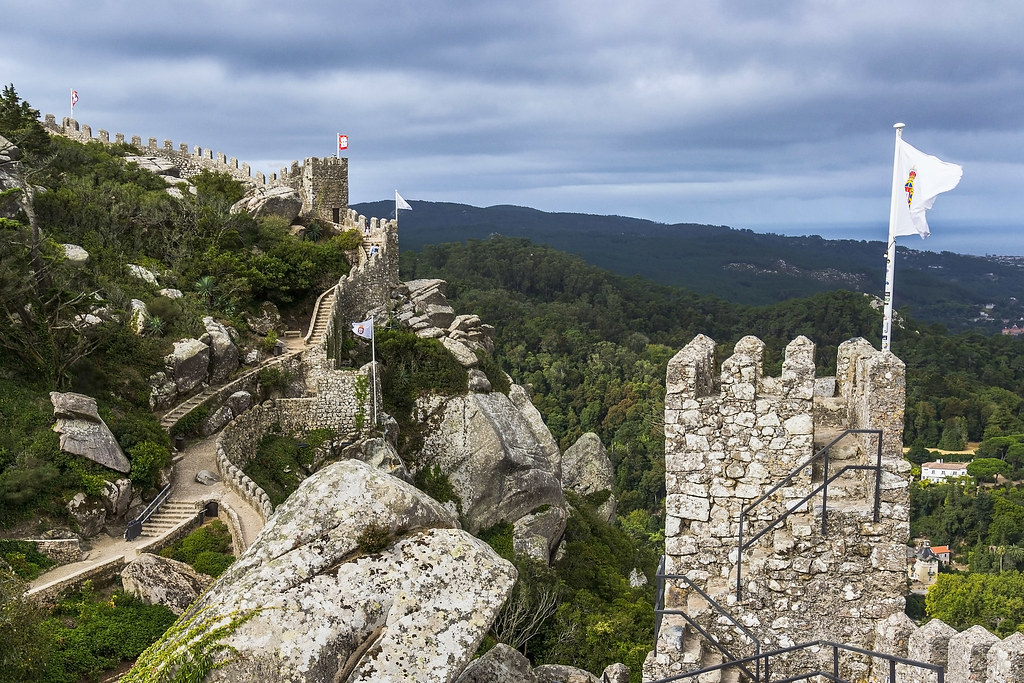
Climb the winding path to explore these impressive hilltop castle ruins overlooking Sintra’s Old Town.
The Moorish Castle offers breathtaking panoramic views of the Sintra Mountains and the Atlantic coast. The castle’s distinctive red and ochre stone brick walls encapsulate a sprawling complex.
At the entrance, you are greeted with two petite guard towers dating back to the 9th century, when Moors controlled the region. Within the walls, the ruins contain relics of a medieval royal palace with granaries, cisterns, stables, workshops, and living quarters.
The best-preserved building is the Mudéjar-style Palacio Nacional de Sintra, with iconic conical chimneys. On clear days, the north tower atop the castle walls offers a 200-mile view stretching to Lisbon.
The castle grounds are an outdoor museum showcasing Arab decorative tilework and 16th-century Portuguese tile murals. Wandering the ramparts offers a glimpse into Sintra’s multicultural medieval history during Arab and early Portuguese rule.
With its stunning views and Moorish architectural styles, the castle is a highlight when visiting Sintra.
See the National Palace of Sintra
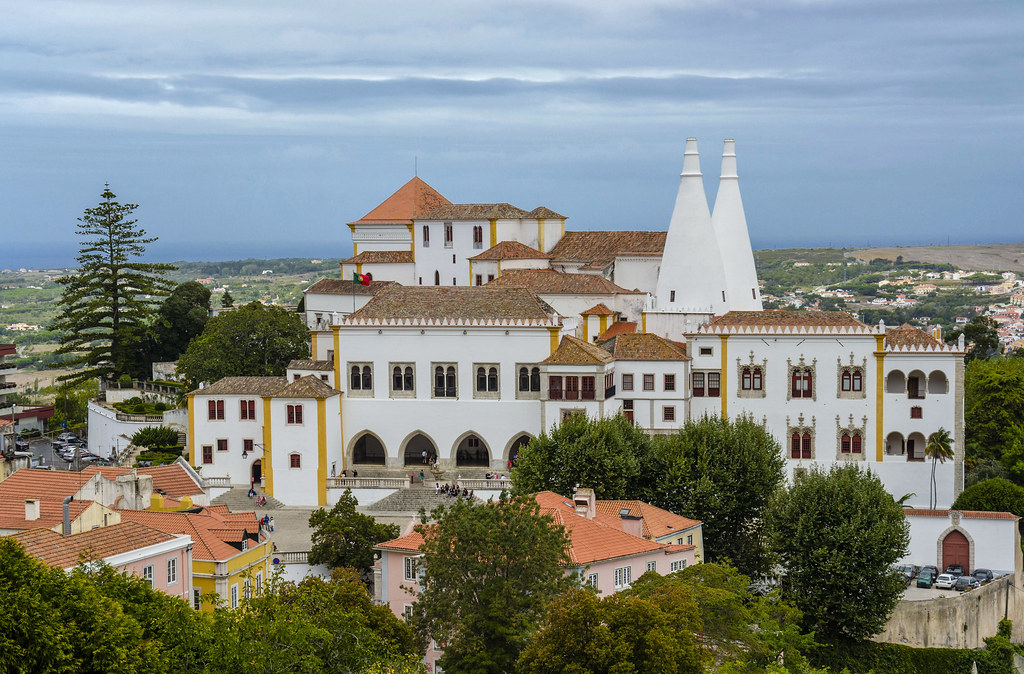
The former royal summer residence you find within the center of town.
The creamy white walls and iconic twin chimneys of the National Palace of Sintra create a striking profile. The historic royal residence dates back to the Moors in the 8th century; the palace encapsulates many intriguing stand-out features for you to explore.
Inside, you find the Swan Room gleaming with ornate wood panel ceilings carved into intricate repetitive patterns, representing Portugal’s late Gothic Manueline architectural style.
The distinctive conical-shaped chimneys in the kitchen are an iconic example of Moorish architectural influences. Blue and white 18th-century azulejo tiles in the bedrooms and halls depict court scenes from Portuguese history—Moorish arches frame picturesque valley views from the palace windows.
Outside the courtyard, a marble fountain is supported by entwined gilt octopus tentacles in a unique Baroque style. In the lush grounds, shaded garden walkways are lined by tiled murals depicting warrior hunting scenes.
With its blend of architectural styles and idyllic setting, Sintra’s National Palace encapsulates many of Portuguese history’s top cultural influences and stand-out features.
Its well-preserved rooms and striking chimneys should not be missed on your trip.
Walk the Old Town of Sintra
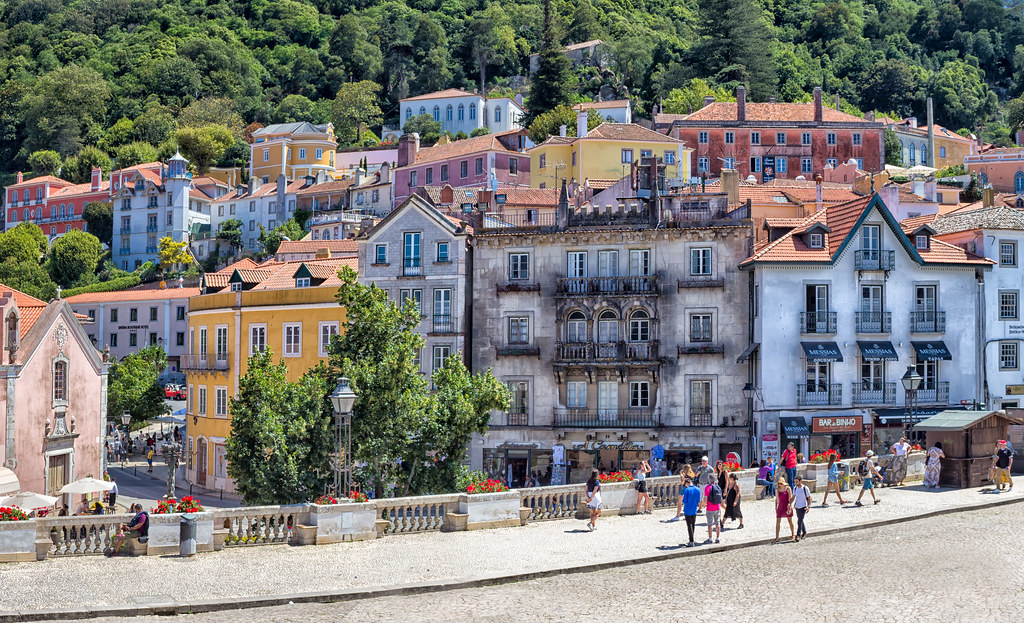
Stroll the picturesque narrow lanes lined with pastel-colored manors from the past aristocracy. Browse shops and cafés around the National Palace Square. It will feel as if you have stepped into a fairytale.
To get around town, you can walk, take a taxi or the famous tuk-tuk. Travel by bus or take a ride with an e-bike. Expect to start your day early and end late with this day trip.
Day 4 Lisbon Itinerary: Vist Cascais and End at Cabo da Roca
Spend your last day experiencing the nearby Portuguese coastline. Cascais is a coastal town that offers postcard-pretty scenery with a marina, beaches, and an old pedestrian town.
Hit the waves at Guincho or take in the breathtaking ocean vista. Then, journey slightly north along the coast to stand at the dramatic cliff of Cabo da Roca, the westernmost point of mainland Europe.
Finish your Lisbon escape with a relaxing seafood meal as the sun sets over the water.
The Old Town Cascais
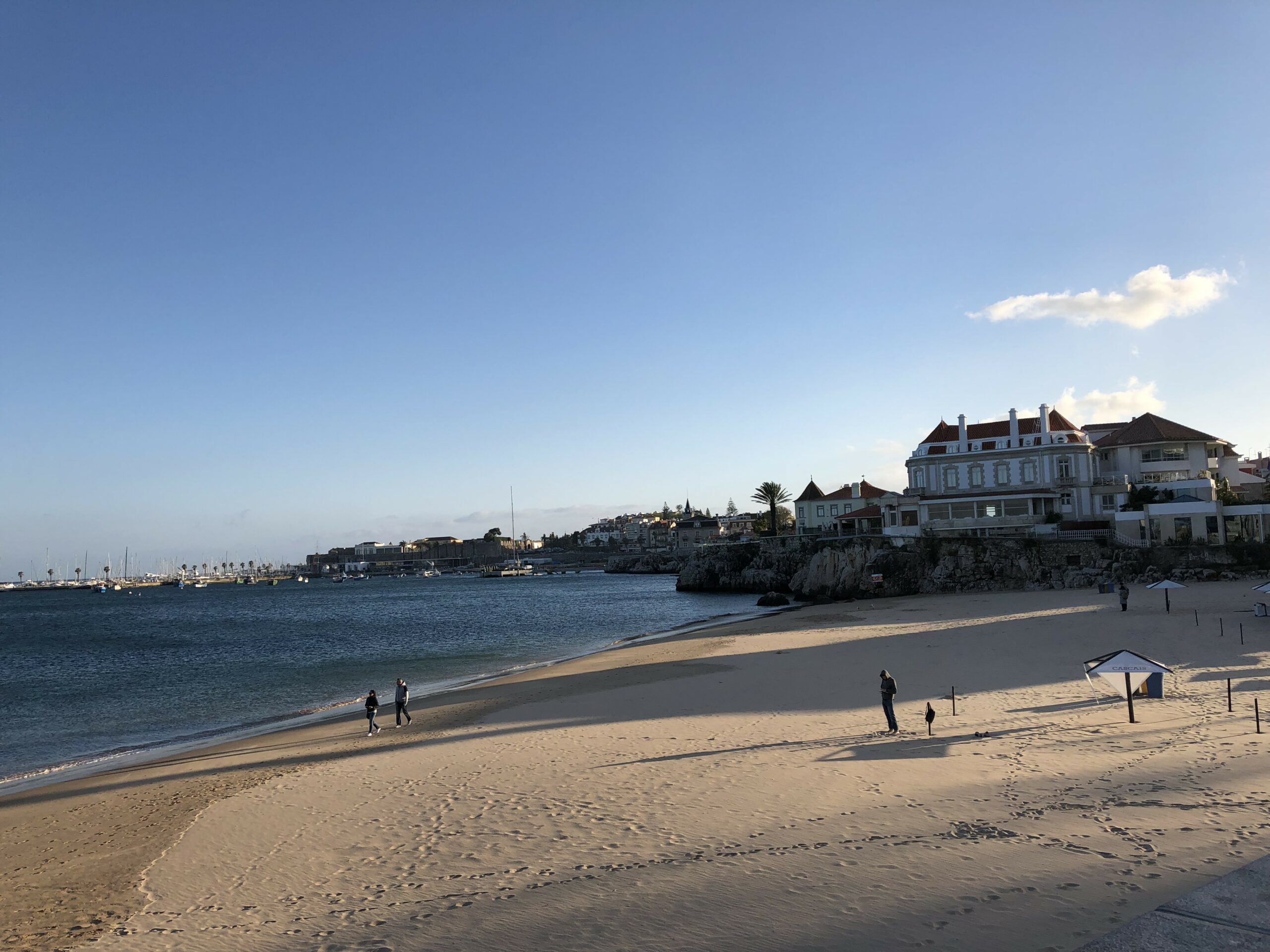
Head from the metro station to a former fishing village in Cascais, a beautiful part of Lisbon, Portugal, with traditional cobbled lanes and charm.
You can find a cafe to start your day with coffee and food while shopping at the boutiques. Just sit back and soak up the architecture and peaceful atmosphere.
Here, you will find a few beaches to cool off and spend hours relaxing at the beach.
Go to Cascais Marina

Walk along the waterfront to reach the marina. It offers a relaxing atmosphere and lively entertainment.
By day, the marina provides front-row seaside views of sailboats bobbing in the Atlantic waves with the Sintra Mountains visible across the bay.
You can soak in the ocean air while sipping espresso at one of the many al fresco cafes and stylish restaurants lining the marina.
Head to Museum Quarter
Several small museums cluster together to showcase local culture, arts, music, sea life, and the region’s history. It’s worth a quick visit if you have time.
The cultural center with art exhibitions or the Condes de Castro Guimarães Museum is here.
You find it in the palace, and it has an impressive artifact and art collection. You will take the whole morning to venture through them.
Head to the Boca do Inferno
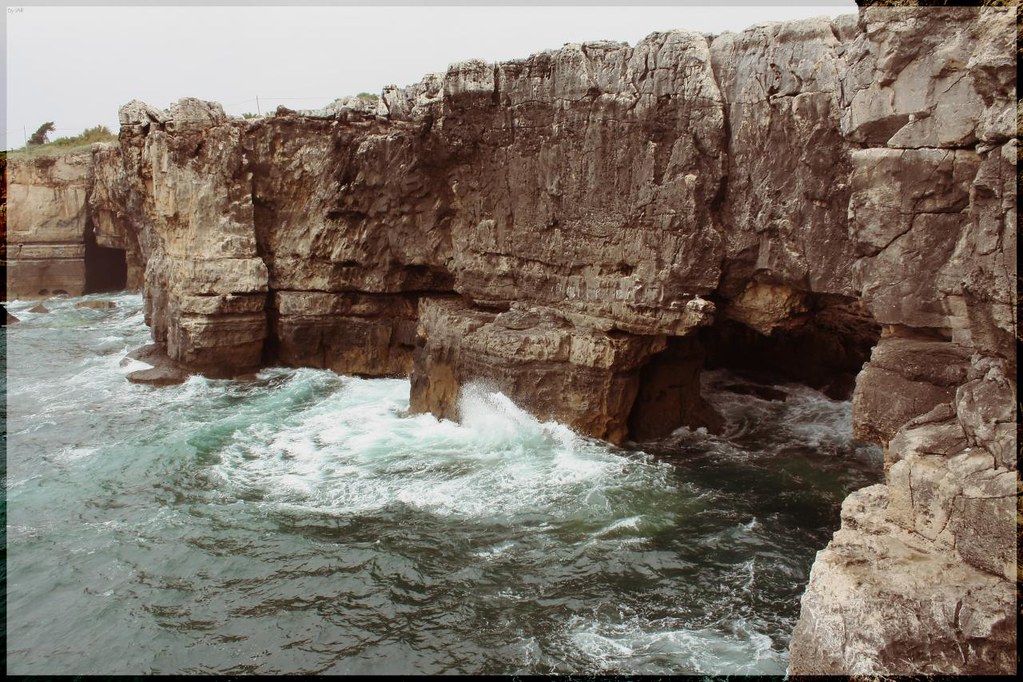
Ride a small tourist train out to watch waves crashing violently against the rocky cliffs during high tide at this local natural attraction.
The place is known as Hell’s Mouth. Here, the rocky shoreline forms a cove shaping a gaping sea cave where ocean waves thunderously smash against the rocks with bursts of spray.
When conditions are right, giant 20-foot emerald and sapphire waves surge into the mouth of the cave, creating a watery explosion resulting in the name “Hell’s Mouth.”
A scenic coastal trail allows you to descend to cliffside viewpoints, offering prime dramatic views down to the churning cove and vistas stretching down the coast. In addition to its natural beauty, Boca do Inferno has rich folklore attached to it, including tales of sea monsters rising from its depths.
With its jaw-dropping setting and mystical seaside charm, Boca do Inferno is an unforgettable Cascais destination for nature lovers and adventure travelers drawn to the power of the sea.
You can also quench your thirst at one of the nearby bars and small shops.
Relax at Guincho For Beach Time
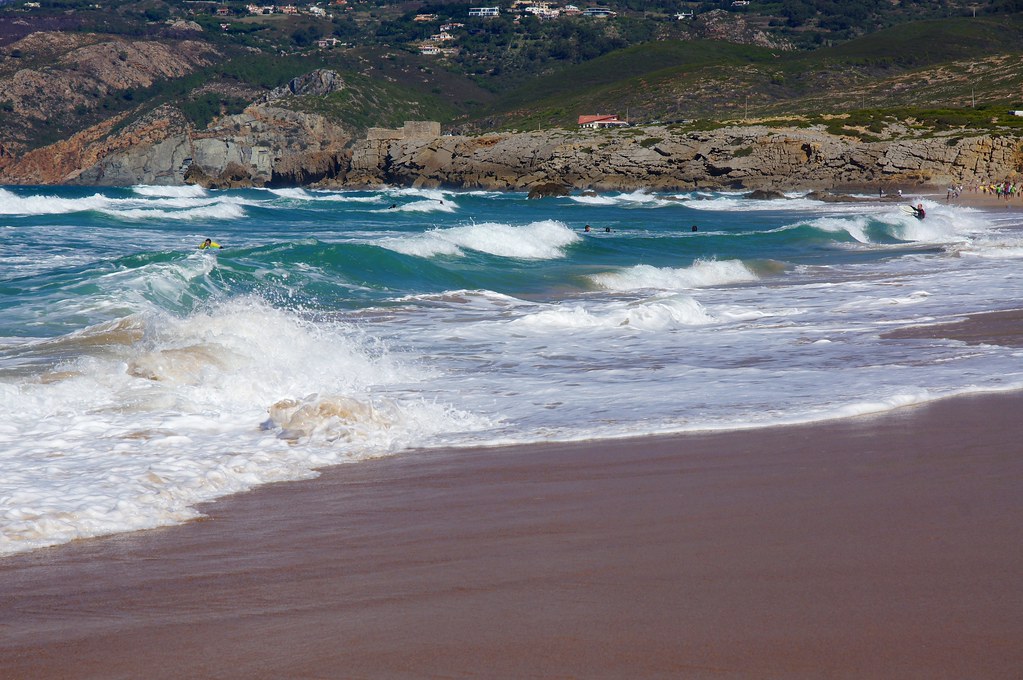
The windswept sands and prime windsurfing conditions draw beach-goers to this popular spot below the mountains. Take off your shoes, walk through the dunes, and watch the people windsurf.
Marvel at Cabo da Roca
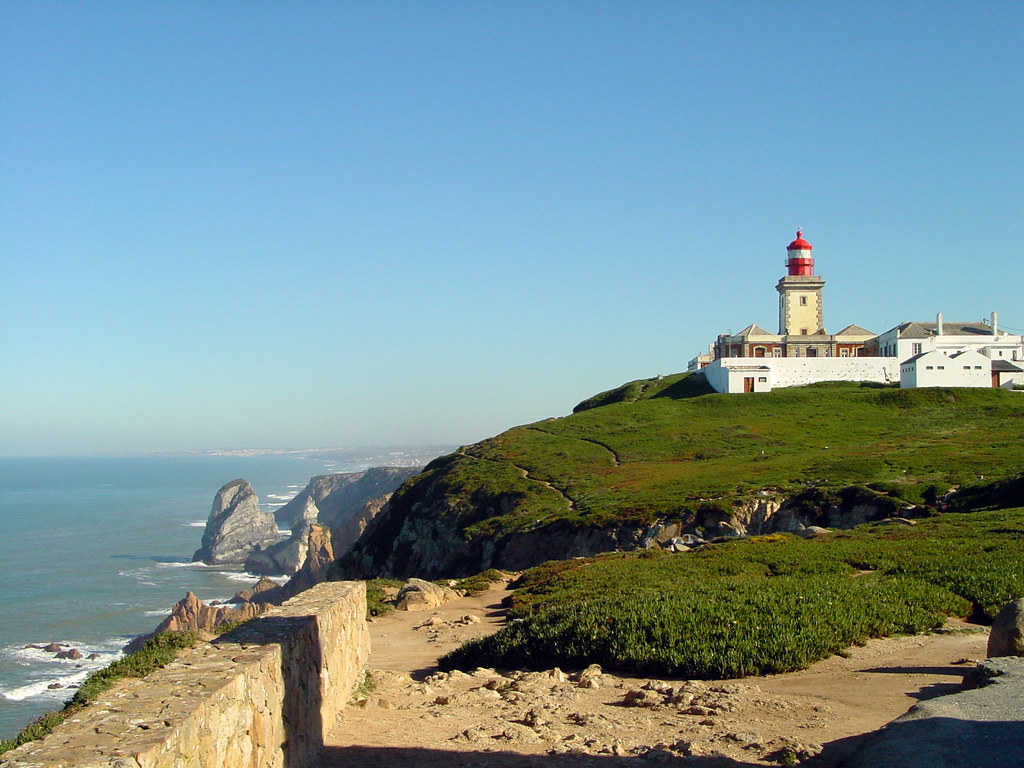
Then, head to Cabo da Roca, Europe’s westernmost point, which offers the ultimate oceanfront scenery and panoramas. Part of Serra de Sintra National Park, Cabo da Roca’s natural sights should not be missed.
Upon arrival, you can stop at the granite cross monument marking the headland’s tip and take the winding path down to sheer cliff edges over the restless Atlantic waves crashing 140 meters below.
The exhilarating views stretch expansively along an unspoiled coastline with huge angular boulders. A small museum highlights the region’s nature and history.
For an unforgettable souvenir, get your passport stamped with a commemorative ink stamp verifying you’ve been to the “edge of Europe.” Or, for some poetic inspiration, visit the stone engraved with words from 16th-century Portuguese poet Luís de Camões comparing Cabo da Roca to the end of the earth.
Cabo de Roca is a must-visit for dramatic scenery and bragging rights in Portugal.
End Your Day in Cascais
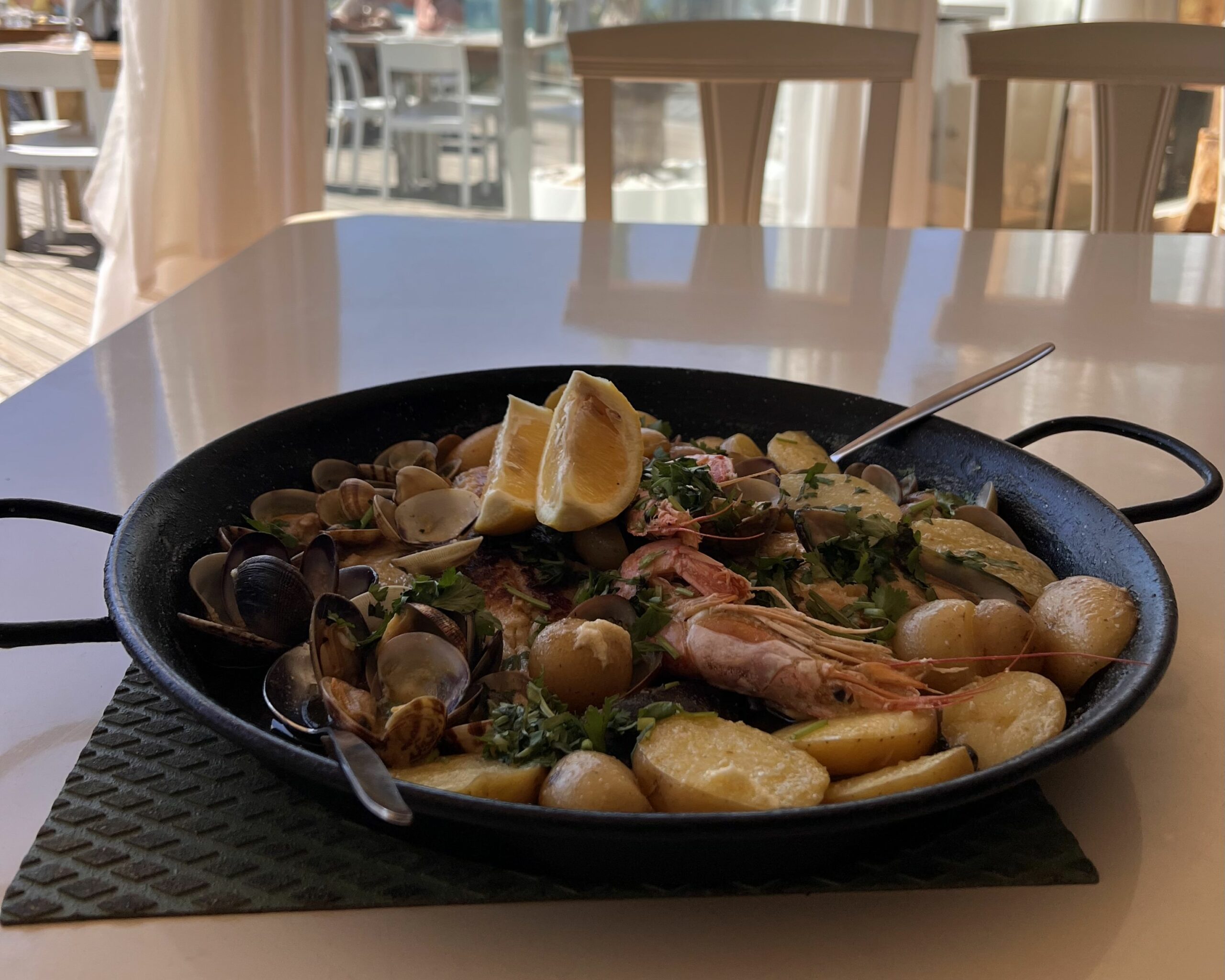
Indulge in the day’s catch at one of the many excellent seafood restaurants along the marina.
Here, you can enjoy traditional Portuguese cuisine and many other delicacies. One restaurant that comes to mind is Mar do Guincho, which serves locally sourced specialties overlooking the Atlantic, including garlicky gambas shrimp, whole grilled sardines, and codfish with olive oil.
The Restaurant Baia do Peixe sizzles up a praised arroz de marisco, brimming with mussels, clams, and tiger prawns along the lively Baia Beach boardwalk.
For fine dining, the sophisticated Santini Restaurant in the Cidadela Historic Hotel elegantly plates sea bass with champagne sauce alongside coastal views through grand arched windows.
No trip to Cascais is complete without sampling juicy, wood-fired Portuguese sardines at any restaurant featuring the iconic silverfish. Locals and tourists favor this dish for showcasing the region’s flavors.
Here is where you will end your 4-day trip in Lisbon, Portugal. We hope you enjoyed your stay in the beautiful place.
Wrap-Up: 4 Days in Lisbon
In just four action-packed days, you will have seen Lisbon’s top sights and experienced authentic local culture.
With ticking even more items off your Portugal bucket list, you’ll leave wanting to return and discover more of enchanting Lisbon and its coastal treasures.
But if you are unsure how many days you need, check out my guide to find suitable days to explore Lisbon.
